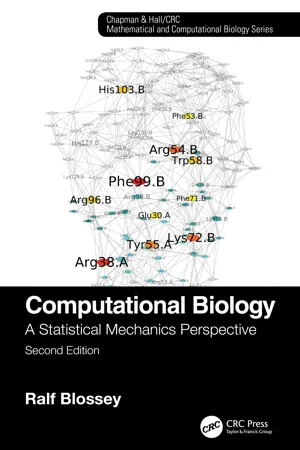
- 285 pages
- English
- ePUB (mobile friendly)
- Available on iOS & Android
About this book
Computational biology has developed rapidly during the last two decades following the genomic revolution which culminated in the sequencing of the human genome. More than ever it has developed into a field which embraces computational methods from different branches of the exact sciences: pure and applied mathematics, computer science, theoretical physics. This Second Edition provides a solid introduction to the techniques of statistical mechanics for graduate students and researchers in computational biology and biophysics.
- Material has been reorganized to clarify equilbrium and nonequilibrium aspects of biomolecular systems
- Content has been expanded, in particular in the treatment of the electrostatic interactions of biomolecules and the application of non-equilibrium statistical mechanics to biomolecules
- New network-based approaches for the study of proteins are presented.
All treated topics are put firmly in the context of the current research literature, allowing the reader to easily follow an individual path into a specific research field. Exercises and Tasks accompany the presentations of the topics with the intention of enabling the readers to test their comprehension of the developed basic concepts.
Frequently asked questions
- Essential is ideal for learners and professionals who enjoy exploring a wide range of subjects. Access the Essential Library with 800,000+ trusted titles and best-sellers across business, personal growth, and the humanities. Includes unlimited reading time and Standard Read Aloud voice.
- Complete: Perfect for advanced learners and researchers needing full, unrestricted access. Unlock 1.4M+ books across hundreds of subjects, including academic and specialized titles. The Complete Plan also includes advanced features like Premium Read Aloud and Research Assistant.
Please note we cannot support devices running on iOS 13 and Android 7 or earlier. Learn more about using the app.
Information
Table of contents
- Cover
- Half Title
- Series Page
- Title Page
- Copyright Page
- Dedication
- Contents
- Preface to the Second Edition
- Preface to the First Edition
- Part I: Equilibrium Statistical Mechanics
- Part II: Non-equilibrium Statistical Mechanics
- Index